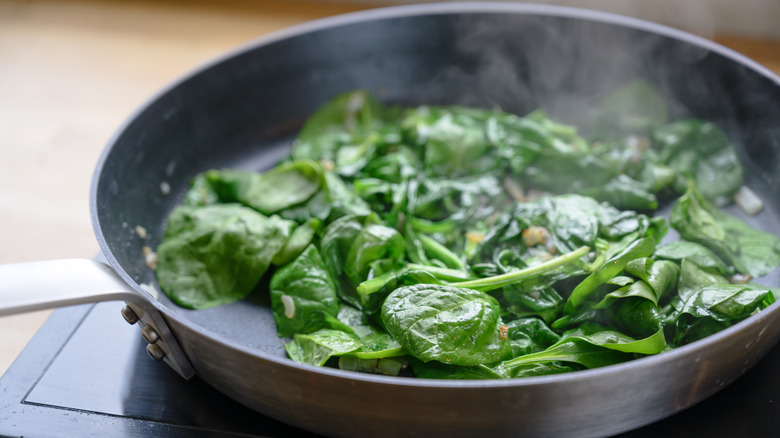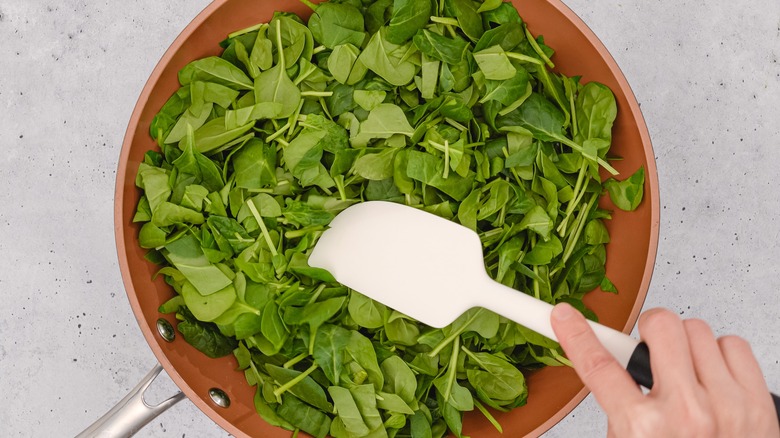The Trouble With Reheating Leftover Spinach
Spinach is an exceptionally nutritious leafy green, packing in high quantities of iron, vitamins C and E, potassium, and magnesium in a single serving. Tossing a handful of the veggies into smoothies, sauces, and salads is an easy way to add more veggies to your diet. But while eating spinach is a great way to get important nutrients, reheating leftovers of the greens can be harmful to your health.
Spinach is chock full of nitrates, which are naturally occurring compounds that may help reduce your risk of cancer and other chronic health conditions, according to WebMD – all good stuff. But consuming too many nitrates can lead to "serious health effects," per the Centers for Disease Control and Prevention (CDC), especially for babies. And a study from the University of Medical Sciences in Iran showed that cooking significantly increased nitrate levels in spinach, while research from Foods demonstrated that stir-frying increased nitrate content by 31%. Plus, if you cook your spinach at high heat, nitrates can convert into nitrosamines, which are carcinogenic. To avoid exposing yourself to potentially dangerous amounts of these compounds, you may want to avoid reheating these leafy greens at high temps.
How to reheat leftover spinach
All this research doesn't mean you have to toss out your leftover spinach to avoid overexposing yourself to nitrates, and it is possible to reheat it safely. In short, just make sure you're not heating your spinach at very high temperatures — so try to avoid nuking it in the microwave on full power or stir-frying it on the stove. If you do want to use the microwave, try setting the heat to medium or low and pausing to stir occasionally. This can also be helpful if you're re-warming leftovers that have the veggies mixed in, like a creamy chicken spinach pasta bake.
You can use the stove to warm your spinach too, but again, keep the heat to medium-low or low. Lightly sauté it until just wilted, and then pull it off the heat. And when in doubt, consume your leafy greens raw in a salad, grain bowl, or smoothie to avoid any dangerous levels of nitrates altogether. But if you do cook yours, make sure to toss them after five days — they can start to go bad at that point.

